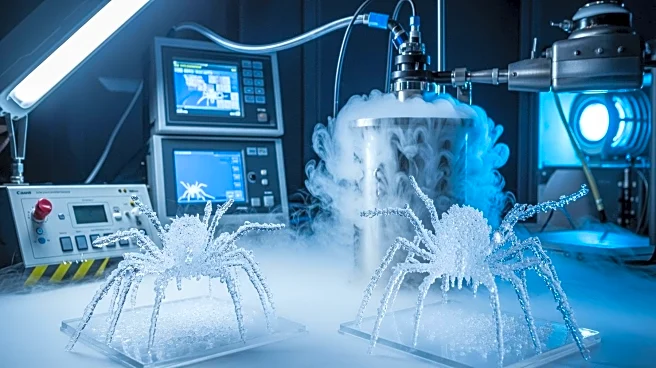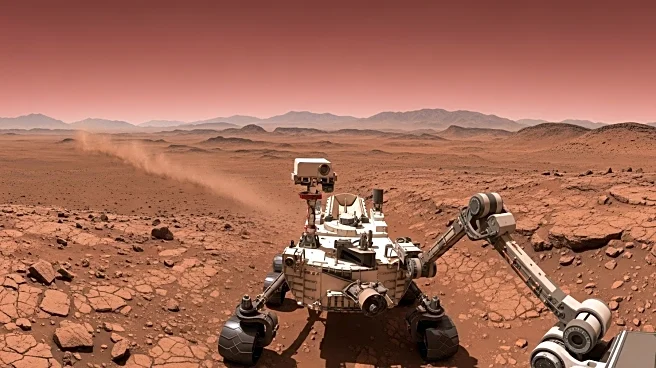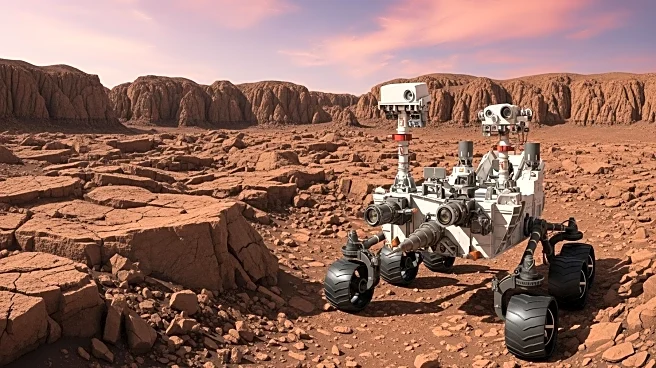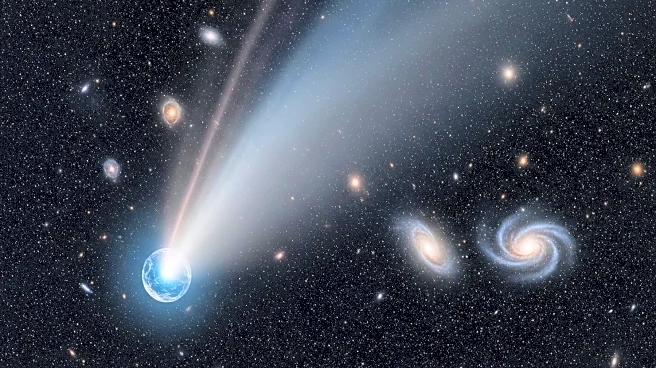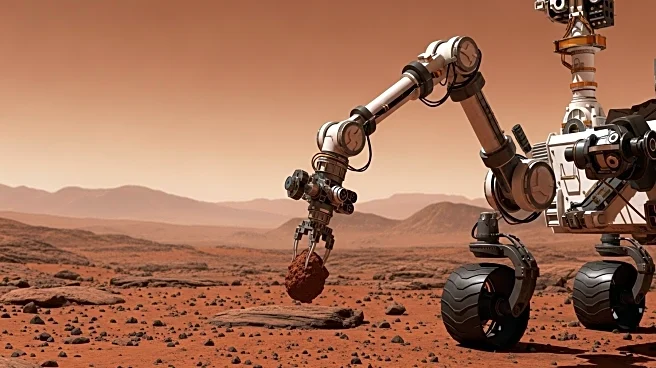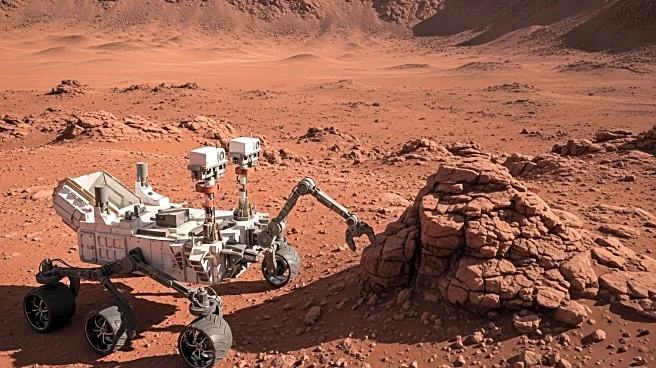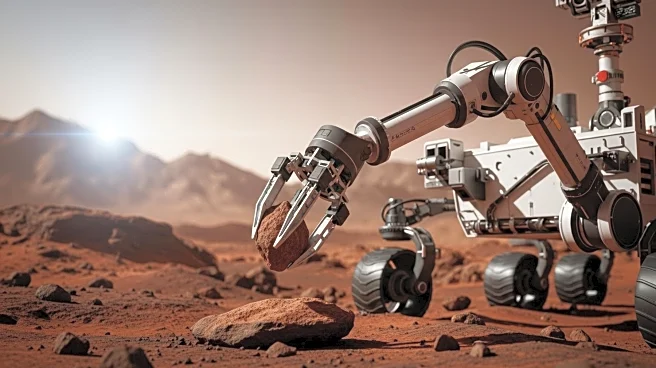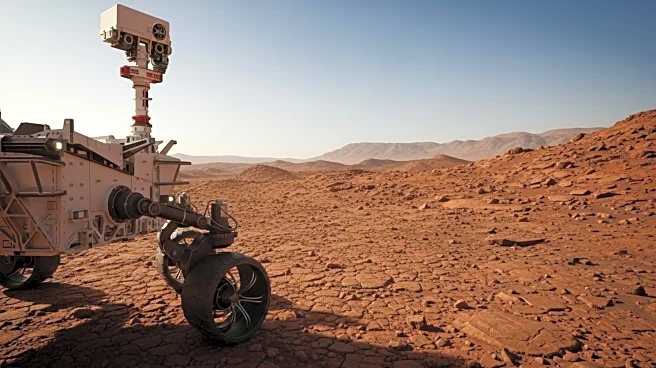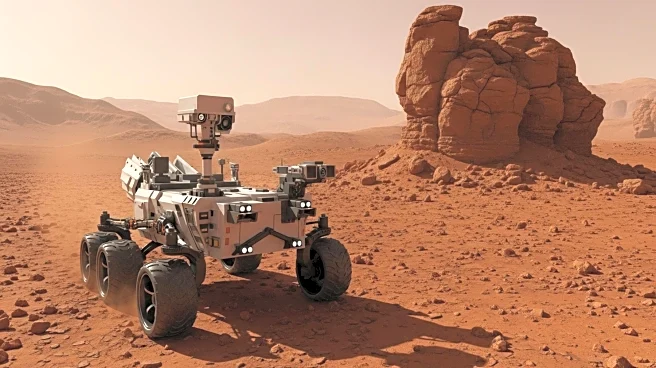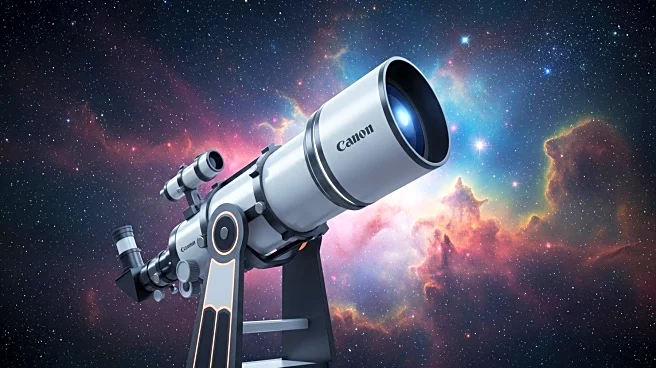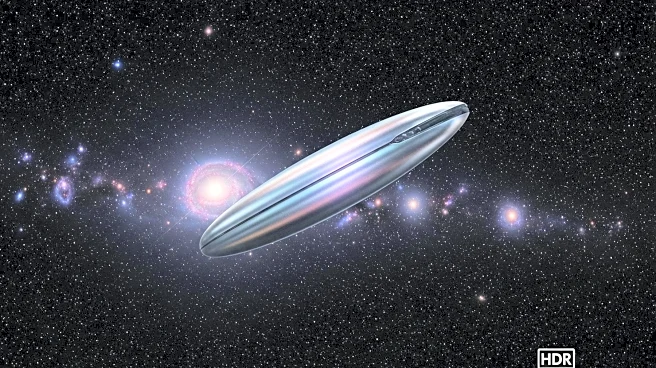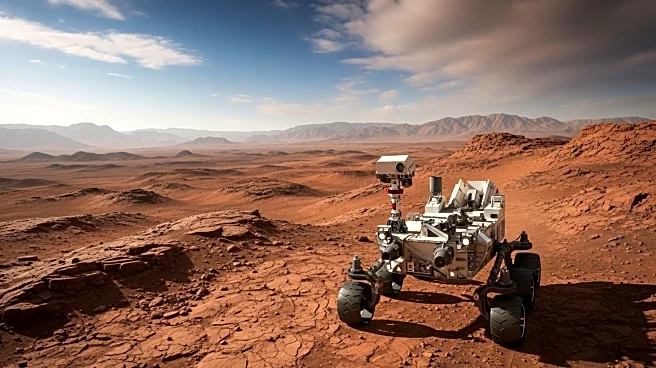What is the story about?
What's Happening?
NASA scientists have successfully recreated the enigmatic 'spider' formations found on Mars, using liquid nitrogen in a laboratory setting. These formations, resembling arachnid-like structures, are primarily located in the southern hemisphere of Mars. The study, published in The Planetary Science Journal, involved simulating Martian conditions to understand the geological processes behind these formations. By introducing carbon dioxide into a controlled environment mimicking Mars' climate, researchers observed the formation of spider-like channels. This process involves the sublimation of carbon dioxide ice, which transitions directly from solid to gas, carving out channels in the Martian soil. The research aims to uncover more about Mars' geological past and its potential for habitability.
Why It's Important?
The study of Martian spiders provides significant insights into Mars' geological processes, contributing to our understanding of the planet's history and its potential to support life. By replicating these formations in a laboratory, scientists can better comprehend the dynamic nature of Mars' surface and atmospheric conditions. This research is crucial for future exploration missions, whether robotic or human, as it helps in planning safe and successful endeavors. The findings also highlight the importance of interdisciplinary collaboration in space exploration, combining geology, planetary science, and engineering to advance our knowledge of extraterrestrial phenomena.
What's Next?
Future research will focus on understanding why these spider formations are predominantly found in specific areas of Mars and not others. Scientists are also interested in exploring whether these structures are remnants of a time when Mars had different climatic conditions. This could provide clues about the planet's geological history and its potential for habitability. Upcoming missions may aim to study these aspects further, revealing more about the enigmatic Red Planet.
Beyond the Headlines
The study underscores the significance of laboratory simulations in planetary science, allowing researchers to replicate and study extraterrestrial phenomena in controlled environments. It also emphasizes the role of interdisciplinary collaboration in advancing space exploration, as geologists, planetary scientists, and engineers work together to design experiments that enhance our understanding of other worlds.
AI Generated Content
Do you find this article useful?
